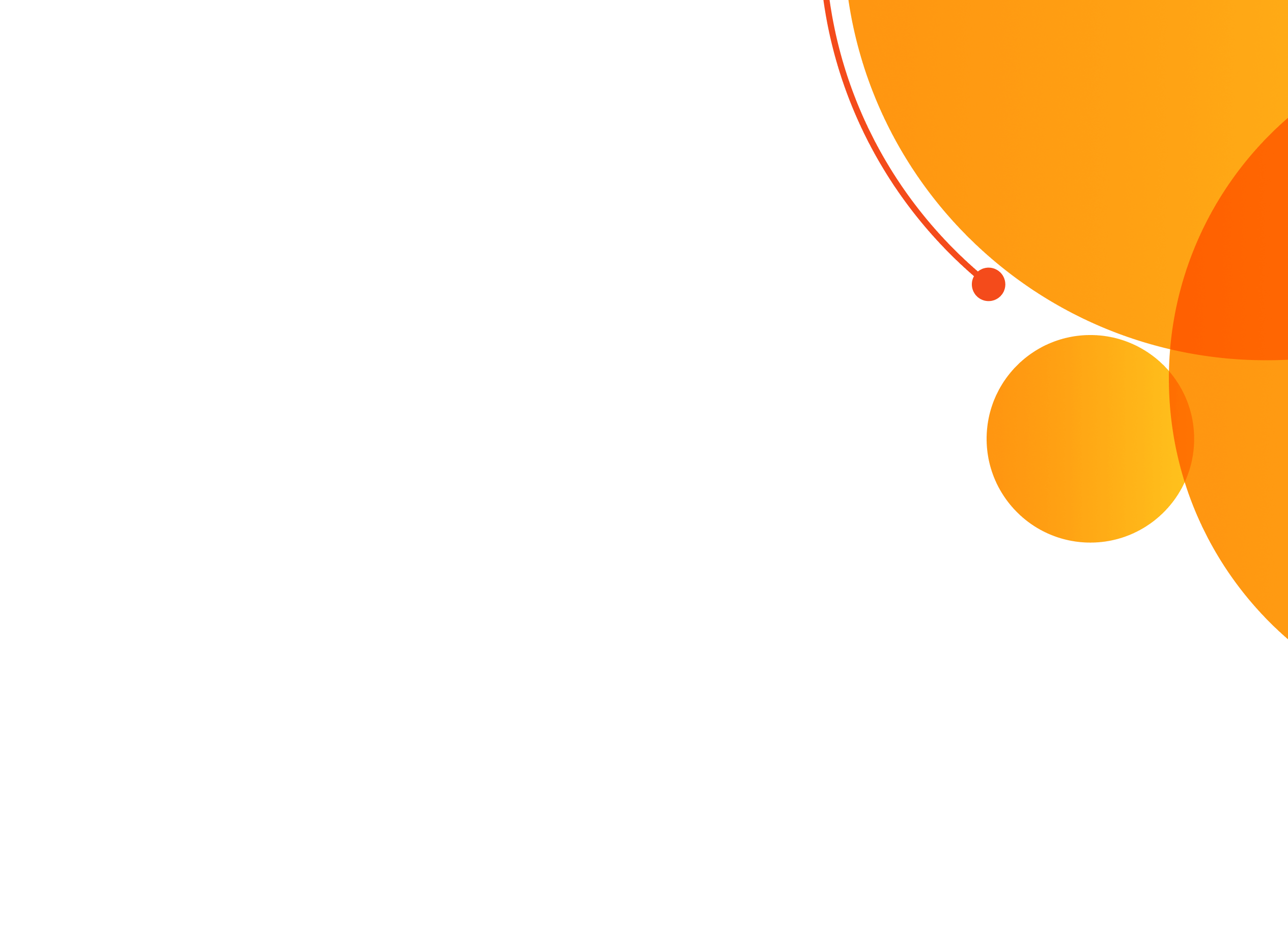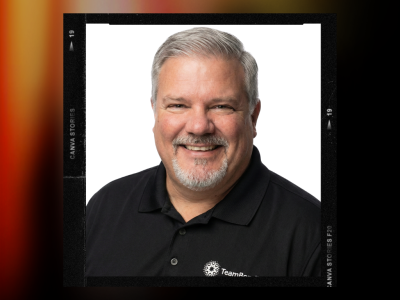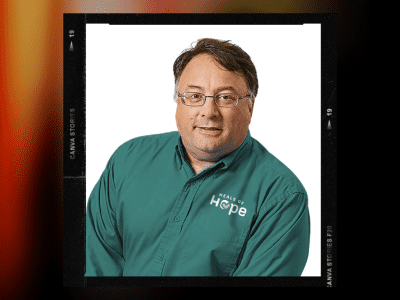STRONG TEAMS DON’T HAPPEN BY CHANCE 
Cracking the Corporate Communication Code
w/ Maurice Harary

Use the buttons above to listen now.
Transcript - Cracking the Corporate Communication Code
Rich: On this episode of Team Building Saves the World.
Maurice: I’m talking to my team all the time, even during, you know, this interview, there’s Slack messages coming through, I’m sure, and I, you know, and it’s not meant to catch people. Right. But it is meant to catch people a little bit, in the sense of, want to you can trust.
What they’re saying, don’t just sandwich negative feedback with two positives. I’ve heard that one and I think people are have figured that one out.
Rich: Hello team. It’s me, your old friend, rich Reinland, host of team building saves the world. A show where I speak to thought leaders from around the world discussing variable strategies and tools to help you and your team. Build a better work environment. And today I wanna make sure you’re hearing me right as we discuss effective internal communications with the founder and c e o of the bid lab.
Maurice Harra, the first need to share some love with my support as a team bonding. If your team is ready to experience teamwork through the power of play, the visit team bonding.com to learn more. Now, my friends, he’s eager to jump in, so please join me in welcoming my guests, Maurice Harary maurice,
Maurice: hi. Hi, everyone.
Rich: There he is. Thank you. Thank you so much, Maurice. Thanks for coming on. I’m so glad you could be here. I’ve been doing some studying up about you before we got on. So I want to make sure that my team gets, get in the same headspace. Go ahead and start us off. Tell us a little bit about yourself and how the bid lab got started.
Maurice: I’m Maurice Harary. I’m one of the co-founders of the bid lab. I started the bid lab with my wife and co-founder Jordan, who used to be running auto car dealerships. I was heading up RFPs and bids at a big tech company and one day she needed to open up a new car dealership, which requires a bid and. She needed help and, you know, she paid someone else 10, 000 to develop her RFP when I was doing this for a living.
But she could have kept that in the family, yes. And then, you know, overnight she ended up having to because the night before the bid was due. It was terrible. I couldn’t allow my wife to submit something like that. I redid the whole thing and it ended up being this situation where the entity that was bidding called her and said they had never seen a bid like this and it was amazing and it was such a good job.
And so my wife and I looked at each other, we were like 10, 000 for. A document that was terrible. That would be the competition. Let’s jump in and help. And, and that’s where the bid lab was born. And now we’re helping small businesses like, you know, auto dealerships, but a ton of different, you know, industries, uh, doing their bids around the country.
Rich: The big thing that I was surprised to learn about the bid lab is that you are 100% remote. Is that correct?
Maurice: Yes, we are. We were actually a hundred percent remote even before COVID. Okay. We started, my wife and I started this, we bootstrapped the whole thing. So keeping things remote was a really great way to get started with the business.
And we started in 2017. Now we were well positioned by the time COVID broke out to really be able to help companies that needed immediate assistance with their RFPs and their bids in a remote setting. And so we still continue it to this day. Our, our company is completely remote. Even after we’ve had tremendous growth, our team is still a hundred percent remote.
Rich: Okay. But that’s the big thing. That’s the, the, the main reason we have you on here talking about effective communication internally is, I mean, what are the challenges you face either remotely or face to face, you know, with your teams when it comes to effective internal communication?
Maurice: You know, I think that the people really think about it as there can be this huge challenge, right?
Or this huge, you know, problem with remote. But if you find the right people, I think that there won’t be that challenge. You know, the biggest thing is, though, is that the person that is the right person has to be someone that confirms and communicates that they actually… Received an instruction or received guidance or received a project.
Right. You know, not just assuming that people will just assume that you did the right thing. You know, if there was an in-person office building, your boss can just come up to you and, and, you know, see how you’re doing and see, you know, give you the instructions and, and see a nod, right? Like, oh yeah, I, I hear what you’re saying.
Mm-hmm. . But in remote, if someone doesn’t, Respond and confirm that they actually know what they’re doing. Then they’d probably wouldn’t last very long at our company. Okay. You need to communicate and confirm when you actually, you know, get an assignment, get a project, get an instruction. Um, I think it’s really important.
Rich: But that’s, I mean, how is it you can make certain what are, what, what’s your actual do’s and don’ts when it comes to making sure that misinterpretation isn’t, isn’t hand or is handled correctly, that the tone of a discussion is, is the way you want it to be.
Maurice: So the first thing I would do is say on the do side is, you know, confirm your receipt of the instructions by maybe even summarizing the instructions to your boss or your manager that that can say, Hey, this is how I understand the instructions.
Is this what you meant? And and let them confirm or let them say and if they don’t understand, right? Move away from, say, messaging. Move away from slacking this conversation. You know, I find when there’s too much back and forth of clarifying, clarifying, clarifying. Eventually, one side will feel awkward and just be like, I think?
You know, it’s better to just get on a call. Hash it out. And another do there is after you get on the call, don’t just get on a call. Get on a video call. Right. Seeing the right person and seeing their reactions. There’s a lot of nonverbal communication that goes on. We do lose some of it with remote, but if you have your video on, you at least can eliminate or minimize how much of that you’re actually losing.
I would say don’t send, you know, you asked for do’s and don’ts. Don’t, you know, from the, you know, from the manager’s perspective, don’t assume that you’re an important message was seen. Right. If someone didn’t answer you, double check with that person before you let too much time go on. Don’t argue overwriting, talk it out, hash it out, and also try not to send, you know, a stream of consciousness set of messages, you know, one after the other, after the other of eight messages, when you could probably consolidate it into one big message.
I find that when eight messages come through people get, you know, they just can’t consume the information that the way that you. The person is trying to convey it.
Rich: Gotcha. Gotcha. Yeah. It’s the more that is said, the easier it is for somebody to misconstrue.
Maurice: Yes, exactly. And just be precise about the wording you’re choosing.
And if they have questions, then answer them.
Rich: And how many different types of tech do you use when it comes to communicating with your teams? I mean, you already mentioned slack.
Maurice: Yes, I use Slack. I use Slack. It’s the best. I, I love, I use the Google suite of tools. So, you know, Google docs, Google sheets, Google drive, Google meets.
Um, I can probably be an advertiser for Google. Um, but in addition to that, we also use project management tools. Um, we’ve actually just made a big transition to monday. com that we found is helpful, um, for communicating tasks and deliverables by a certain date as well, and good old fashioned email.
Rich: So you had talked about having the right type of people.
Uh, what exactly is the right type? I mean, what makes them right?
Maurice: You know, I think that someone that is a good communicator is someone that will be a good communicator even during the interview process. But I think taking, not just necessarily taking a person’s word for that they’re a good communicator, right?
If you ask someone, hey, are you a good communicator? I don’t think people would necessarily think that they aren’t. Sure. Finding the non verbal ways of how people communicate, right? So, how is their email cadence during the interviewing process? Are they taking a long time to respond? Are they responding quickly?
Are they responding professionally? Are they responding just with like a one line word? You know, email. You’re like, if they’re doing this before the interview, imagine what they would be doing. Once they’re already an employee, right? Um, but everyone comes with their own communication style, and I think that’s okay.
Right? You know, as long as you show, you know, respect in your communication, some positivity. We’re all about positivity here at the Bid Lab, right? Bringing positivity to your communication and, and, and, you know, and always being trustworthy and, and moral and, and the, and the things you’re communicating.
Okay? Those are the three pillars I would say. But then, you know, a little enhancement here. A little enhancement there. That’s normal, I think, once employees become, you know, employees.
Rich: Well, I wanted to dig in a little bit there. Positivity. If you’re communicating mostly via text or emails, how do you maintain positivity?
I cannot tell you how many times I have tried to put forth even the most rudimentary of jokes in a text or an email, and it just falls flat. So, how do you maintain that, not only the positivity, but the corporate culture of it?
Maurice: Yeah, I think it’s really it’s I wish there could just be one answer, right? I wish that I could just be like here you take this course and you you bring in positivity, right?
Sure, but I think it’s a combination of a bunch of little things, right? I think the first thing that starts with yourself, right? Be nice and be positive yourself Even when you’re stressed even when there’s your team is growing so quickly even when the clients are putting pressure on you be nice Right.
There’s no reason why Especially as, you know, in the management position, if you’re not nice, that will roll everywhere, you know, underneath you. This is a really hard one also is remove your high performers that are negative. And, you know, a lot of times people look at negative people. and high performers as possibly two very different people.
But sometimes someone could be very efficient and great at what they do, but nasty about how they do it. And if you say to the rest of the team that that’s okay, it’s only about the work, it’s only about the KPI, then… They’re only going to be focused about the work. They’re only going to be focused about the KPI.
So, it’s really, really important to either, and don’t just, I mean, get rid of that high performer that’s negative. Obviously, try to work on an improvement plan for them of being more positive, signing them up for maybe a communications course or something to be more positive. But, you know, definitely bringing it back
to, be both. And call out the positive communicators. Always, you know, if someone’s communicating the right way, they’re being positive, they’re being professional. Call them out. Say, I love how you said that. That’s a great way to say that. We should turn that into a template, right? And that’s going to bring me to my next thing is try and templatize as much as you can, right?
If you can make templates that are already building in positivity and professionalism, you know, let people configure them and put their own style on those templates as much as they want. Right. Bye. Give them a framework. What is the expectation? I think a lot of times people like you were saying, you know, like sometimes I’m saying a joke and I think it’s a joke And yeah, yeah, you know, it’s and that’s okay You know everyone jokes differ from humor differs from geography and location, right?
You can’t expect everyone to understand everything But if you give them a template and a something and a framework to operate within It’s nice because it does give them also, you know, the guardrails Of where I can really go now. How far can I go with this? And then the last thing is really just make it a part of your core values, you know, core values for a company.
We actually at the Bid lab have positivity as our core value, right? It’s a core value here. And I know it sounds like something you just say, but bringing positive, if it’s a core value, put it into all your communications. And every single part of your process, however, you’re interacting both internally and externally.
And you, if you’re missing that people will call you out on it, right? Because you put it front and center and all of your materials, they will call you out on it. And together, I think all those points really bring in a positive work environment, at least here at the bid lab. We, we have,
Rich: why would you think that’d be so important though?
Because there are still those companies. Yeah. Well, not just positivity, but any of it. Because there are still companies out there that think I want to just give you the job to do Not hear from you until the job is done and know that I’m making money because you did your job, right? There’s there’s still there.
So what’s the importance driving this way of motivating?
Maurice: I think that the motivation at least for here at the bid lab is that we always think of people that we’re bringing on in the long term right like we view people not just as a function of completing something that person can one. I mean, my head of sales even started off originally as in reception.
She was answering phone calls and doing operations, and this was over five years ago, and she has. Time and time again, proven herself, um, shout out to Brittany on my team, who is now the head of sales at the company. And she is, and, and if I had just thought of her and her original role in operations and everything, and I just was only trying to get through it, she would have never gotten the full potential and the opportunity and also, and have given me every, you know, and, and, you know, works with me so well, right.
All these years. So I think that there’s a lot of real value, especially for small and medium sized businesses that are growing. You need a team that supports you and grows with you. Um, not just, you don’t want to just churn through a bunch of people. And that’s what happens when it’s negative is you just churn.
Rich: How often do you actually communicate with your, with your people?
Maurice: Oh, I talk to my, my, my people. It’s, this is not a good, I don’t know how good this is. I talked to that more than my best friends, even because my, well, luckily
Rich: one of them is your wife. So hopefully she’s right up there, but, but your, your team, how often, how often do you, do you keep in communication with them?
Maurice: I’m, I’m a very, I, I make myself available. I am. Um, always on Slack, I always, my calendar is transparent. I let everyone see everything in my calendar, and they book times whenever they want. I’m just that type of person where I’d rather people not go in the wrong direction for so long. Okay. I’d rather them just ask and so I make myself, I’m talking to my team all the time, even during, you know, this interview, there’s slack messages coming through, I’m sure, and I, you know, and they don’t, they’ll look at my calendar and see I’m on this and, you know, they’ll, they’ll be able to, to figure it out.
But the, I like to make myself available. Fabulous.
Rich: Okay. Uh, I hope you don’t mind Maurice. Feel free to go ahead and check those slacks. I do need to step away just for a quick second. Amazing. I’m going to tell my team out there about a company I’m very proud to be a part of. Team Bonding. Team Bonding was founded over 20 years ago with one simple question.
How can employees have a great time while fostering strong, authentic bonds between people who work together? No matter where your company is located, Team Bonding offers powerful, engaging, custom team building events designed to get the best out of your team anywhere in the world. They’ve created a catalog of innovative events, using the power of play as a learning tool, and tapping into the correlation of work and play.
So whether it’s scavenger hunts, to Jeopardy, and so much more, the team bonding of activities, whether they’re live, virtual, or hybrid, maximizes the impact of team building with an accent on fun. So visit teambonding. com to schedule your event. Now team bonding when you want seriously fun results, and we are back talking about internal communication with Maurice Harary, Maurice, how do you keep it fun with your people, even though they’re so
Maurice: far distant?
I think keeping it fun is, is actually bringing it and understanding what your people need and want, not just what you want and what you need. Right? And so in our world, in the bidding process and RFP is for people that don’t know about RFPs in the bid lab, bids and RFPs traditionally not working with the bid lab is a very hard process.
It’s a very. Morale sucking process and, and especially RFP writers are often, you know, run to the ground. I mean, I know this because I used to work at a huge tech company running RFPs. And my job was to get as many RFPs and bids out as with the same salary.
Rich: Just before I lose my team, an RFP is.
Maurice: A request for proposal.
Thank you. So a request for proposal or an RFP is a solicitation that a big business or government might issue in order to source new products and services. And so what we do is we help small businesses actually create beautiful proposals that make them stand out against larger companies that might have a huge team internally.
So when we approached fun and positivity and we were looking at it with our team, we said like, what do you actually. Like, what is it, you know, to not have you burn out? What is, what are some of the points where you’re feeling like, yes. And we offered vacation, right? We have like paid time off and all that stuff.
And of course we, it’s important to do that baseline there. But then we went further. We created a 401k, we have a health insurance. We, we felt that the physical wellness of people was very important over time. And then we actually went a step further. And we realized that a lot of times we were, we were doing things for people and we would send them fun things, but they would end up giving it to their family members or they’re, they would be using, they’d be focusing on it with their friends or whatever.
And they weren’t really taking care of themselves. And so we created, which I think is very unique to our company, you know, a credit that we give to all of our employees that compensates them for really, you know, once a month that they can do whatever they want. With it, that is all about wellness and they could get a massage, they could go work out, they could do whatever they want with it.
And it’s about taking care of themselves and having fun. It’s the most used benefit that we have here at the lab because people just, you know, and people bond about it. Then they talk about it. Oh, we had, you know, people will coordinate their massages or they’ll, you know, even in a remote setting, they’ll, they’ll all take a class at the same time just to have like a fun, you know, a fun thing to talk about and, and that they all are doing at, at the same time.
And even if it’s remote, they’re kind of coordinating it together.
Rich: Sounds great. But, um, how do you take care of feedback though, in those regards? I mean, is this an open forum for everybody or is there a way for them to specifically talk to you one on one?
Maurice: So I also do one on ones with my team every, well, not everyone on the team.
I wish I could, but it’s, you know,
Rich: yeah, you are the CEO after all that, uh, not team therapy.
Maurice: It’s crazy because my job is really to know what everyone at the company, how, what they feel and how, and how they’re feeling. I think that that’s what I need to do to be successful. And I wish I could meet with every single person every single week, but I do have weeklies with all the people that do report directly into me.
And I encourage. And I think they, you know, and I know that they do do this where they all also have their own one on ones with their respective team members. So that reported to them. And so I’m a huge believer on one on ones and I schedule them for the person, not Hey, you know, if you want to have a one on one, let me know it’s no, this isn’t the schedule every Tuesday at two.
And, you know, if you, and if you’re busy or you don’t have anything really you want to talk about, you can cancel it on me. You can cancel it on me. I, I’m not going to be offended, but I want you to know that you always have an open time slot that is yours, that you can talk to me about, um, you know, whatever you want to talk about.
And it’s actually great because people really do talk, you know, because it’s, it’s every week, they’ll come to me with things that I wouldn’t have even thought to ask them about. Bye. Transcribed Talk about it with me because they feel comfortable that it’s not there, maybe not on the first one on one, but maybe by the third or the fourth, you know, and it starts to
Rich: build that rapport going back to communication just for a little bit.
If you don’t mind, how can you be sure that you’re getting the most up to date, most useful, most effective?
Maurice: Uh, technologies for communication. That’s a great question because we just had a huge transition here at the bed lab from our project management tool. We used to use a third party tool and we transitioned to monday.
com. And the reason why we knew, and, and we use monday. com to communicate tasks, to communicate deliverables that we have for our clients. And it’s central to what we do. I mean, really such a huge thing. And so making that transition. It was a very big deal for the bid lab. And the reason why we even realized that because everyone tells you what you want to hear.
Of course I’m using it. Of course. Yeah. You know, they, they’ll check off what they need to check off. But what we realized is that people were just checking off their communications or their tasks right before they were due. Right. And they weren’t matching up necessarily with. And we can see when people are doing their stuff, if they were emailing and they weren’t matching up and instead of, you know, coming down on my team and saying, Hey, why are you using this tool?
We’re paying for that. We’ve implemented and we’re doing all this work for, um, I’m like, I said, Hey, why aren’t you using this tool that we are paying for? And that we’ve spent so much time, you know, and. Right. You know, the people came back and they’re, you know, they were working on the tool. They were working on the tool to report, but they, it wasn’t serving them.
Uh, okay. And so what we did was we heard that feedback and, and we, it wasn’t so explicit. They weren’t telling us, Hey, we need to replace this tool. Hey, we need to replace this tool. We measured the usage and we really got to the crux. And, and because we’re all positive and trust each other. We, it was able to have that communication where we’re like, what’s going on?
Like, why aren’t you using this thing? It’s okay. You’re, you’re doing your job, but like, what’s going on? And then we realized like, Hey, this is not working for our people. We got to find, look out for what’s better. And so we did a ton of research. We actually do procurement for a living. So it was very straightforward for us to find, you know, to compare the different tools out there.
And then once we did, and we found one that matched with our specific needs in our scenarios, we went with it and we jumped right in. And our team is using it and loving it. And actually now the people that were not liking it. Are the people that love it the most because we listened to them and we didn’t come down at them and we, and we really served them a better tool that actually works for them.
Rich: So it’s good to know that you can actually go in and check and see how often this is being used. Cause my next question was going to be speaking as the voice of, you know, coming from the generation that never had things like this. How do you know it’s working? Like what, what methodologies do you have in real time that can assure you your people are communicating, are working and are getting the job done, even though you’re so remote.
Maurice: So, you know, getting the job done. I did know that part of the question because. You have, you know, a person that you have to trust the person and that trust has to be there in order, you know, for anyone to be successful, whether they’re in a remote setting or in the in person setting, there’s always ways you could circumvent, you know, the working process.
And I think seeing how they’re, you know, seeing their KPIs, seeing their results compared to others in the same role is also a very easy way to know, like whether someone’s actually doing their job or not. But going back into, you know, the question about. So, you know, verifying, you know, the trust and verify component, I think is really important when you’re, you know, try, even if you can’t audit in the back end or see usage and things like that.
Right. The devil’s in the detail. So ask a detailed question, find the detail that they would only know if they did the tool. If they use the tool that you would, I do this all the time. And the people that know and do it, it’s an easy question, but the people that don’t don’t. And so it’s not meant to catch people, um, but it is meant to catch people a little bit in the sense of you want to test it and make sure that you can trust what they’re saying.
Rich: Okay. So you’ve been doing this for how long now?
Maurice: We started the business in 2017 and so what is that now? Six, seven years. I’ve been in our seventh year of business and loving it. It’s great.
Rich: Can you share for us any of the particular challenges you might have faced perhaps, you know, early on in the day and then how it became a success story?
Maurice: You know, that’s a good question. I think a very big challenge that we realized early on in the, in the process was that my wife and I have very different communication skills. I mean, it was really the first time that we really, we always communicated very well with each other. Obviously, we were married, but.
We didn’t realize that our work in communication was actually a little bit different. She came from the auto dealership world. Um, it’s very, very hierarchical. Um, I came from a world where it was the tech world, very much like, just get the job done. Who cares? You know? And so, pairing the two communication styles was something early we had to figure out.
Right? And that’s where the templates came in. That’s where… And there’s benefits to both, but there’s also drawbacks to both kinds of, of communication styles. Right. And so Jordan and I realized we were like, we, and the reason why we realized this is because some of our early hires would tell us like, Hey, you know, I got a message from Jordan and asked me to do this and you’re asking me to do this.
I don’t know which one I’m supposed to be doing right now. And you guys are both the boss, you know, it’s, and I, and I feel bad for them. Right. I’m like, shoot, we did it. And Jordan and I didn’t intentionally do it. We’re both just focusing on our own. You know, stuff that we need to be doing. And so what we realized is that we had to have a coherent leadership communication style that both of us could really adopt and be on the same page about and respect one another to pull each other in to communications with people that report into both of us so that we are both aware of when someone has something on their queue.
And so I think. For me, in that instance, it was more of a, of a reflection of my own leadership communication style. Okay. Rather than trying to force everyone else into doing different, you know, a different communication style. For me, it was about, Hey, we need to be clear and we need to be coherent amongst each other to make sure that everyone else who’s trying to do what they want to do, you know, what they’re trying to do, what they’re getting paid to do, to do the right way.
Rich: So did you and Jordan have to create a template for just the two of you before you can create the template for everybody
Maurice: else? Well, we created the template. We have a bunch of templates here, but Steve always laughs at me. I’m like, turn it into a template, turn it into a template. Nice. And I always start the, the way that we do that is I always start the communication, right?
I’ll, I’ll draft it. I’m the starter. Jordan’s the finisher. Okay. So I always, everyone knows that the company will start with me and it’ll, and it’s not over until Jordan approves it. Because You know, she, she knows exactly, she is just so attentive to the detail. And, and it is nice to have one voice for the company.
Um, and I’ll tell you her voice is better.
Rich: So besides that though, the templates, I mean, let’s say that somewhere out there in the ether of podcast world is a manager, somebody, somebody, a higher rank, somebody up in the C suites who overhears this and is like. There could be interesting methods that he’s talking about for me to use.
Do you have any kind of, you know, positive experiences or positive, uh, advice that you can give to that listener?
Maurice: Yeah, I would say, you know, I think you need to treat feedback and criticism as not this icky thing. You know, like I, I don’t think that. You know, it’s also, it’s like the same concept about the concept of talking about money.
I think a lot of times people are uncomfortable about talking about money and some people are uncomfortable about talking about feedback, right? They’re, they’re nervous to get feedback. And I, and the advice that I give to everyone. About feedback is that the feedback should don’t just sandwich negative feedback with two positives.
I’ve heard that one And I think people are have figured that one out, right? It’s like yeah, it’s like they’re so nice then there say something being there was something nice. Okay, but they’ll still remember the thing, right? It’s more about keeping it to the work and not on the personality, right? So if something is not meeting your expectations explain to them what specifically in the you know The document or something in the work that someone made, explain to them exactly what you would have done differently.
Don’t just say, well, this is, this is rushed. What is, no, maybe even if it was rushed, there’s probably a good reason why it was rushed because they probably had a bunch of work that they had to do also. So, and that brings me to the second piece is, is give people the benefit of the doubt, right? Come to play, come to a place in the discussion.
Where you’re like, okay, but giving people the data is not just like, let’s give them excuses in their head. But think about what their day could have looked like that brought them to failing that expectation, right? Is it, or do they look at their calendar? Do they have a thousand meetings? Did they have a crazy due date right before that?
Is there, have you noticed like a change in their personality where maybe something on their personal lives could be impacting their work? Give people the benefit of the doubt when you’re approaching them and, and, and working on that. But the best and most effective way that you can instill feedback and, and, and open communication and positive communication is actually.
Taking feedback yourself. Right. I always, you know, I’ve been, you asked me a few seconds ago, when did you guys start this company back in 2017. Right. You know, I could be like, well, I’ve been here the longest. I know and I’m great. Right. But no, I actually, whenever someone comes down, I always tell them, Hey, You are a fresh pair of eyes, right?
Like, you are a fresh pair of eyes on our processes, our, our, everything. So when you see something, you need to say something. And, if you say something, sometimes I’ll tell you, hey, we don’t do it, we’re, we can’t do that because… X, Y, and Z, but other to the time, it’s like, Hey, we just seen this a thousand times.
So we didn’t even pick up on that. That’s a great point. Let’s implement something like that and bring it to the work. Don’t bring it to like, Oh, I don’t, you know, I don’t know why I had it set up like that. I’m so stupid. None of that. Take the feedback. Take it to the work and implement it. And when people see you taking feedback, then they will take feedback from you as
Rich: well.
You can point out problems without placing blame.
Maurice: Yes. And be very specific about the problem and not the blame of who caused it. Right.
Rich: What specific means do you have for the employee to be able to do that for the managers? Is that part of that weekly meeting or is there another methodology
Maurice: you use? I love that you’re thinking about it from the employee’s perspective, because the employee’s perspective, it’s really, really important to establish from the beginning that you are going to be open and that you’re not, you know, when you’re going after, if there’s something that you see that you want to.
that you want to improve. Use the same advice. First of all, give your boss the benefit of the doubt. Bosses also have personal lives and have a thousand other priorities that they’re also focusing on. So make sure that you are also taking that into account when you’re giving feedback, right? Don’t just come to them and say, help and be complaining.
Come to them and say, I see that you’re busy and that’s just not been addressed. So I would suggest maybe doing something like this. So also come with a solution is a really nice. Um, it’s always the best thing for an employee to do or a possible solution. It doesn’t mean that your solution will be implemented, but a possible solution to show that you’re not just a complainer, but you’re really trying to think through the problem and how to solve it and your manager will love you.
Rich: But what methodologies do they have to do this and how is it? You can from day one of hire, let them know that they have the freedom to do
Maurice: it. I think the way that an employee could figure that out in the beginning is to really use the opportunity to identify how your, your manager likes to communicate and what level of urgency they need to hear from you, right?
So the first thing would be how, you know, how they communicate. Is it phone? Is it Slack? Is it email? Change how you, or configure how you’re communicating to how your manager best communicates, if you’re trying to effectively communicate with them. But the second thing is, you have to understand, like, what level of…
Does your manager really have on your role, right? Are they someone that, you know, your role is really, really important to their success. So they need to know things right away, or are they overseeing a bunch of different teams and different departments? And they’re kind of hoping that you’re going to be self sufficient, right?
If it’s the first one, then you need to be problem solving with your manager as things are happening, communicate, be in the trenches with your manager. But if it’s the opposite, you need to be. Prepared to come with real sets of solutions and options for your manager to choose from.
Rich: Okay. Maurice, I can’t thank you enough for coming on.
I hope you had a good time being here.
Maurice: I did this is fun and you know, I have to say it’s such an important thing. Communication is central to success, especially for a small growing business. So thank you so much for having me. I am always open to talking about the stuff. So if you ever want us again, we’re here, please
Rich: last thing though.
Is there anything in the future that you would love to see done? So that internal communication can become even easier.
Maurice: I would, I would say that, you know, I would like for people to stop arguing over an instant messaging tool. I think that people are so used to texting and so used to all this stuff in their day to day life that they bring it into work.
And I would love for some, you know, face to face in a remote setting to come back and to be more prevalent. And we require everyone here to be on video every time they are. Uh, talking to someone else on
Rich: the team. So I can’t tell you how much I love hearing that because anytime I do a virtual meeting facilitation for team building, and there are people who are trained, keep your video off, keep your mic muted, unless it’s your turn to say something, nothing moves.
It’s I’m talking to me.
Maurice: Yeah. I was like, I’m on video by the time you jumped on. I love video. I love seeing people’s faces and their, their nonverbal reactions. I think it’s, it’s huge. Do you, have
Rich: you seen everybody’s kids and pets? Do they all come on video with you? I,
Maurice: by the way, they do. They see, we have a lot of parents.
I, you know, um, shout out to Tim’s cat Skittles, who always steps on his keyboard whenever we’re talking. Um, only when we’re talking though, it’s the funniest thing. And, um, you know, I, I really get to know all of them. You know, their kids, their, their pets. You know, their backgrounds, even I see like, Oh, you added a new picture.
It’s your background. I love it. I love seeing it. You know, it tells a lot about a person’s personality.
Rich: All right. Lastly, my friend, uh, is, is there any way that, uh, any of my team out there could find out more about you or about your company?
Maurice: Yes, you can always connect with me on LinkedIn. I’m Maurice Ferrari.
Um, but if you want help with your bidding process or anything to sell to the government or a large enterprise, visit our website at www. thebidlab. com or check us out on social media or thebidlab. com.
Rich: Fantastic team, give it up for Maurice Harari. Thank you, thank you.
And speaking of making the most out of a potentially tedious process, I hope you’re ready my friend. Because, in case you forgot, it’s time for the Speed Round.
Maurice: Yeah. Speed Round. Speed Round.
Rich: Speed Round. Speed Round. Alright, briefly to recap from what I was explaining to you at the beginning of the show, I’m going to play some music that will play for 60 seconds.
Then during that time, I’m going to ask you a series of completely innocuous questions. This is just our way of getting to know you a little bit better. You answer as many as you can, as fast as you can. But if you are feeling competitive at all, we’re looking to beat 14,
Maurice: 14, all
Rich: right, let’s see if we can do it.
As soon as you hear the music, I’m going to start asking questions. And away we go. What’s your name? Maurice. How many kids do you have? Two. Which one’s your favorite?
Maurice: Neither. Do you have any pets? Yes.
Rich: If you could hear your pet speak, what would you like it to say?
Maurice: How much? He loves me.
Rich: Do you consider yourself a leader or a follower?
A leader. What’s your favorite book?
Maurice: New York’s a novel.
Rich: What’s one choice in life
Maurice: you regret? Not marrying my wife earlier.
Rich: If you could be any cartoon character for a day, who would you like to be?
Maurice: Mojo jojo,
Rich: if you could. I’m sorry. What’s the most courageous thing you’ve ever done?
Maurice: Started this?
Rich: If you could star in any sport, what sport would you like to be in?
Maurice: Uh,
Rich: but what’s your favorite holiday? If you could time travel, where would
Maurice: you go? FIFTEEN!
Rich: You did it, buddy! We
Maurice: so I gotta win.
Rich: Fantastic! Oh my goodness. Oh, now this is a show for the ages. Thank you. Now that it wasn’t great already. Maurice, thanks again. And yeah, we look forward to hearing from you again in the future.
Good luck to you, your wife, all your team. Thank you
Maurice: so much for having me. It was a pleasure.
Rich: Thank you, pal. And thank you, my team out there. That’s it! We are wrapping up yet another episode of team building saves the world. If you’ve enjoyed this episode, whether you’re new to the podcast or an old fan of the show, please be sure to share with everyone.
You know, whether they’re your coworker, friend, family member, it doesn’t matter. It just helps us to share all this vital information. You can find out all about us, including all past episodes at teambonding. com slash podcast. You can also find us wherever you find your favorite podcasts, Google podcasts, Apple podcasts, Spotify, wherever you go, that’s where I’ll be.
And don’t forget to look for. is at team bond podcast and leave us a message telling whether you like the show or what you didn’t like about the show or if you have an idea for a future topic. I want to hear from you. So my friends before we say farewell for this episode of team building saves the world.
Please never ever forget, if you’re within the sound of my voice, you’re on my team now, and I am forever going to be on yours. So long team. I’ll see you next time.
Maurice: It’s been said that you learn more about a person in an hour of play than in a year of conversation. So why not put your co workers to play with the help of the team at Team Bonding? Team Bonding was founded over 20 years ago with one simple question. How can employees have a great time while fostering strong, authentic bonds between people who work together?
Their catalog of innovative events includes Includes scavenger hunts, jeopardy, and much more. Each activity, whether live virtual or hybrid maximizes the impact of team building with an accent on fun. Visit team bonding.com to schedule your event now. Team bonding when you want. Seriously, fun
Rich: results.
August 15, 2023
Don’t get lost in translation!
Effective internal communications serve as the cornerstone of a positive company culture. While on-site organizations can rely on in-person interactions, remote companies often communicate through long-distance text-based platforms, necessitating guidelines and strategies to foster inclusivity and a healthy workplace culture. In this episode, we explore the key do’s and don’ts of text-based workplace conversations, avoiding ambiguity and misinterpretations with Founder of The Bid Lab, Maurice Harary. The leadership’s upfront and transparent approach sets the tone, while organized and accessible communication channels ensure effortless messaging company-wide. Join us as we uncover the secrets to thriving internal communications.
About Maurice Harary:
 Maurice Harary is the founder and CEO of The Bid Lab, a bid consulting firm. As a middle child in a family of six children, Maurice draws parallels between his upbringing and his love of the bidding process: both require being an expert navigator of complex situations and contrasting personalities. Founded by top proposal experts, The Bid Lab manages the bidding process from beginning to end for businesses, government agencies, and non-profit organizations. From finding your next bid opportunity to managing and submitting your bid response, our dedicated experts are there every step of the way. Whether you’re in need of qualification assessment, writing and formatting or the whole gamut, The Bid Lab assists with proposals of all kinds, lengths, scopes, and formats.
Maurice Harary is the founder and CEO of The Bid Lab, a bid consulting firm. As a middle child in a family of six children, Maurice draws parallels between his upbringing and his love of the bidding process: both require being an expert navigator of complex situations and contrasting personalities. Founded by top proposal experts, The Bid Lab manages the bidding process from beginning to end for businesses, government agencies, and non-profit organizations. From finding your next bid opportunity to managing and submitting your bid response, our dedicated experts are there every step of the way. Whether you’re in need of qualification assessment, writing and formatting or the whole gamut, The Bid Lab assists with proposals of all kinds, lengths, scopes, and formats.
Learn more about effective internal communications in our blog.
Don't just get on a call. Get on a video call. Right. Seeing the right person and seeing their reactions. There's a lot of nonverbal communication that goes on. We do lose some of it with remote, but if you have your video on, you at least can eliminate or minimize how much of that you're actually losing.
Maurice Harary
More great podcast episodes.
Season 6 | Episode 18
That’s a Wrap!
Season 6 | Episode 17
Work-Life Integration
Season 6 | Episode 16
Laughing it Off
Season 6 | Episode 15
Corporate Volunteerism in Action
Season 6 | Episode 14
Collaborative Play at Work
Season 6 | Episode 13
The Science of Supportive Workplaces
Season 6 | Episode 12
The Power of Being Present
Season 6 | Episode 11
The Age Advantage




















